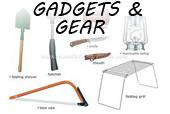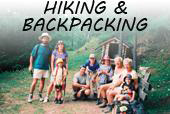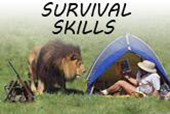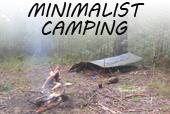Thousands of people every year find themselves in a wilderness survival situation. Fortunately most are rescued alive and well – but not all. If you hunt, hike, canoe, backpack or do other activities that involve the possibility of getting lost in the woods or getting into an emergency situation, it might pay to learn a few survival skills. But what you do before you leave the house may be just as important. Here are some tips then, on how to prepare in such a way that you either avoid the bad situation or are ready for it.
1. The Newest Survival Tool
Cell phones have become the newest survival tool, and have already saved many lives. The key here is to be sure that the battery is good and the phone doesn’t get wet. putting it in a waterproof plastic bag in your shirt or jacket pocket is a good idea, because you might get separated from your pack. Also, it is best to leave it off until you need it, to conserve the batteries.
2. An Itinerary That Saves You
Leaving an itinerary behind will mean that rescuers know where to look if you don’t show up at the end of your trip into the wilderness. Think carefully about where you want to go, because if you change your plans too much while on the trail, the note you left behind become worthless. If there are a couple options you might consider, note them on the itinerary.
3. A Survival Kit
What you need in your survival kit varies depending on the type of terrain and weather you’ll encounter. A good all-around kit should have two ways to start a fire (waterproof matches and a lighter or magnesium fire stick), some aspirin, a small blade for cutting things, some twine, a bit of duct tape, reflector for signaling rescuers, a whistle for the same, pencil and paper, dental floss (many uses) water purification tablets, needle and thread, gauze pads, antibiotic ointment, tweezers, safety pins, medical tape, moleskin for blisters, sun block and bandages. This may sound like a lot, but a kit like this can easily weigh less than six ounces.
4. Navigation Tools
A compass and map are always a good idea, as long as you know how to use them. Keep in mind that if you are lost a map and compass will do little for you until you figure out where you are. A GPS device can prevent getting lost too, but be sure that you remember to “mark” the car or trail head before you leave, so it can guide you back.
5. Proper Clothing
Most wilderness survival situation become real emergencies when the victims become hypothermic. Maintaining your body heat starts with bringing the appropriate clothing. In addition to having clothes that will keep you warm even when wet (avoid cotton), if there is any chance of cool weather bring a small hat and gloves as well. These add only a few ounces to your pack weight, but can save your life.
6. Water Considerations
Food is not usually a wilderness survival issue. Almost nobody starves to death before being found or dying from other causes. Water, on the other hand, is crucial, so plan well. Know where you will be able to collect more water during your hike.
It is safest if you have two water containers, regardless of how much water you bring. This is so that if one breaks or is dropped and lost, you still have a way to gather and carry water. I prefer two plastic pop bottles, since they are the lightest containers available while also being almost unbreakable.
Use these six tips to prepare for any trip into the wild and you’ll probably avoid most emergency situations. Of course, it can also help to learn those wilderness survival skills too. That, however, is a topic for another article.
About the Author:
Copyright Steve Gillman.












